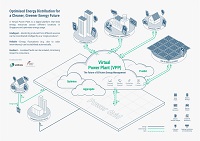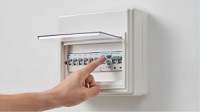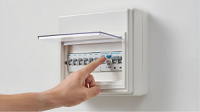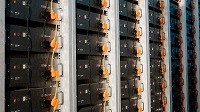As the Chief Commercial Officer, Eugene leads major projects under the Energy Connections Office focusing on shaping one of Singapore’s most strategic energy moves: importing clean, carbon-free energy through regional power grids to power Singapore’s low-carbon future.
In a job where stakes are high, Eugene stands out for keeping things steady with his unhurried, grounded approach.
Sipping on his second long black of the day, he speaks about his work at the Energy Market Authority (EMA) in a tone that is disarmingly casual – a striking contrast to the weight of the responsibility his role carries.
The scale of this work is enormous, involving far more than just technical challenges. Regulatory hurdles need to be addressed as well. For one, alignment is required across different levels of the government (eg. state versus federal government), and neighbouring countries need to give consent for marine passage. Singapore also has its own regulatory requirements. Cost is another key factor: Can consumers here afford the imported clean energy?”
These uncertainties might deter others, but Eugene relishes the challenge of finding the answers.
“It’s Never Just About Building Something That Works”
The quiet confidence Eugene carries today reflects lessons learned over his two-decade career. The first, he recalls, came during his first stint with EMA in 2006.
“My mentor asked me if I knew which two household items had prices that barely changed in 50 years,” he says. The answer turned out to be electricity and eggs. In the 1970s, an egg cost about 20 cents. So did one kilowatt-hour of electricity.
"It's not that inflation stopped. It’s that technology and efficiency gains outpaced it,” he explains.
The question sparked a deeper insight: keeping electricity prices stable – like those of eggs – is not just about controlling costs. It requires innovation and a constant balancing of trade-offs between reliability, cost, resilience, and efficiency to deliver the best outcome for consumers.
“I realised it’s never just about building something that works,” he muses. “It’s about understanding how much reliability is worth, who pays for it, and who benefits.”
“Regulation Can Be Enabling, Not Just Restricting”
Eugene’s next turning point came when he was seconded to the Pro-Enterprise Division at the Ministry of Trade and Industry (MTI). There, he stepped beyond the energy sector to examine regulations across the economy, from food licensing to digital trade.
One particularly memorable project was when a solar company came to MTI, frustrated by all the delays and regulatory hurdles.
“It wasn’t that anyone was against the idea,” Eugene recalls. “But every agency had its own concern – water quality, biodiversity, boating access.”
That was when his team stepped in, pulling in all the agencies together, cutting through the red tape, and helping to smooth the way forward.
“A little alignment goes a long way,” Eugene muses, reflecting on how this project reshaped his mindset. “It showed me that regulation can enable, not just restrict.”
“You Need To Move With Those Who Are Ready”
In 2020, Eugene’s career took another turn, this time to Enterprise Singapore where he focused on helping local companies grow and expand beyond Singapore’s shores.
“It was a jarring shift,” he admits. “As a regulator, you're trained to ensure fair treatment for consumers. But as an industry developer, you’re trying to help businesses create value, differentiate, and grow.”
He had to unlearn some of his instincts as a regulator, but in the process, he gained new insights: sometimes, it is not just about enforcing fairness, but also about seizing opportunities.
“You need to move with those who are ready,” he says.
“No Power Flows Unless Trust Does”
Returning to EMA in 2023, Eugene found that his lessons on regulatory discipline, commercial instincts, and stakeholder relationships were coming together.
“In my current role, you need the discipline of a regulator, but also the instinct of a developer – to encourage investments, build relationships, and align incentives across borders,” he says.
Above all, he believes that success depends on trust.
“People think cross-border electricity is just about cables. But cables are only the beginning,” he explains.
“We need trust in systems – that our grids can talk to each other, that faults can be managed, and that emergencies do not spiral. Trust in markets where contracts are enforceable, tariffs are consistent, and rules are clear. And finally, trust in intent – that this is not just a short-term deal, but a long-term commitment across borders.”
Simply put, he adds, “The best grid cannot move power if there is no trust.”
The Work of Leadership
Although Eugene may not know what the future holds, he remains ready to take on the challenges and build the trust needed to bridge the gaps.
To him, leadership means knowing when to regulate, when to enable, and when to trust.
“The mindset matters,” he concludes. “Energy transition is not just about hardware. It’s also about ‘humanware’ – our capacity to adapt, learn, and lead.”




















